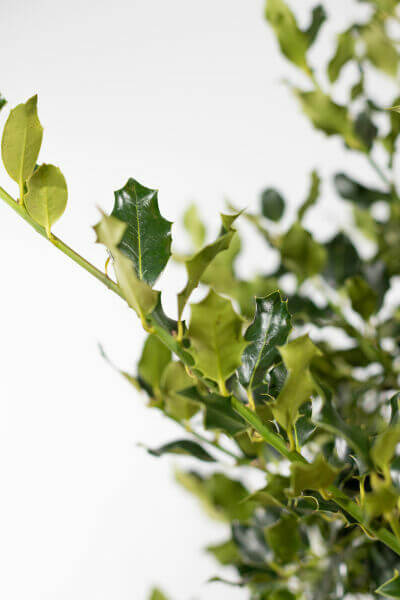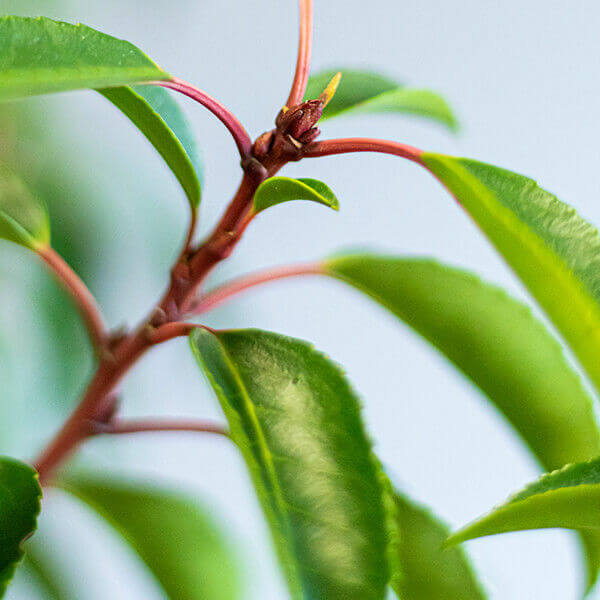Best Hedge Plants For Informal Hedges
Best Hedge Plants For Informal Hedges
Blog Article
Best Hedging Plants For Contemporary Borders
Improve your garden's appeal with lush hedge varieties such as Yew (Taxus), Thuja, Laurel, Photinia, and Bamboo, commemorated for their structural integrity and ecological benefits.
Yew and Thuja offer evergreen coverage and winter strength, while Laurel provides quick growth and broad, fragrant leaves.
Photinia includes seasonal charm with its dynamic red foliage, and Bamboo provides a low-maintenance, serene ambiance.
These hedges enhance air quality, lower noise, and produce tranquil, personal areas.
Proper planting, spacing, and maintenance make sure energetic growth and environmental consistency.
Check out how these lush varieties can raise your garden's appeal and wellness.
Key Takeaways
Change Your Garden With Lush Hedge Ranges
- Select Yew for its thick, evergreen growth and unrivaled durability.
- Go with Laurel for its quick growth and broad leaves, ensuring quick personal privacy.
- Pick Photinia for its vibrant seasonal foliage, which turns a striking dark red.
- Utilize Bamboo for a low-maintenance, winter-hardy hedge with aesthetic appeal.
- Space plants 2-3 per meter and prune routinely for ideal growth and health.
Popular Hedge Plants
When changing a garden with rich hedge ranges, it's vital to consider popular hedge plants such as Yew, Thuja, Laurel, and Photinia due to their special characteristics and benefits.
Yew (Taxus) is highly esteemed for its longevity and dense, green development, making it a prime option for sustaining landscapes.
Thuja is kept in mind for its evergreen foliage and robust winter season strength.
Photinia includes seasonal vibrancy with red leaves that darken gradually, producing dynamic visual appeal.
Laurel provides rapid growth and aromatic, broad leaves, perfect for fast personal privacy.
Furthermore, Bamboo is an outstanding choice for ambiance, using a low-maintenance, winter-hardy alternative that boosts the garden's aesthetic with its stylish, swaying canes.
These selections accommodate a range of horticultural needs and preferences.
Advantages of Garden Hedges
Garden hedges provide a wide variety of advantages, making them an important addition to any landscape. These natural barriers are cost-effective to implement and provide significant wind protection, enhancing air flow and contributing to noise reduction. The thick foliage of hedges like Thuja and Beech makes sure personal privacy by obstructing visibility, developing a peaceful and secluded environment.
Hedges likewise play an important role in microclimate regulation, offering a stable environment that fosters plant development and lessens temperature variations. Their elaborate leaf structures filter toxins, improving air quality and contributing to a much healthier garden community.
Moreover, hedges master sound reduction, soaking up and deflecting sound waves to lower ambient sound levels. This double functionality of supplying both visual and acoustic personal privacy improves the total tranquility and visual appeal of any garden.
Planting and Upkeep Tips
For a successful hedge, precise preparation of the planting location is crucial. Ensure the soil has appropriate pH and drainage to support strong root development.
Area the plants properly for the chosen species. Water the hedge regularly during its initial development stage, changing as required with seasonal changes.
Execute a organized bug control and illness prevention technique, utilizing organic or chemical treatments when essential. Regularly examine for aphids, termites, and fungal infections.
Apply mulch to maintain moisture and reduce weeds. Seasonal pruning promotes dense development and air blood circulation, essential for plant health.
Following these guidelines will help you cultivate a dynamic, properly maintained hedge that boosts the charm of your garden.
Spacing and Cutting Guidelines
Spacing and Trimming Guidelines
Proper spacing and trimming are important for cultivating healthy, aesthetically appealing hedges. Sufficient spacing guarantees each plant gets adequate nutrients, light, and air flow.
Follow these guidelines for optimal hedge maintenance:
- Spacing: Position hedge plants 2-3 plants per meter to encourage robust growth.
- Pruning Strategies: Routine pruning is necessary for keeping wanted hedge height and shape. Cut brand-new growth in summer season and cut down older wood throughout winter season.
- Seasonal Care: Adjust trimming methods and schedules according to seasonal requirements to ensure plant health.
- Hedge Height: Frequently display and cut to preserve the preferred hedge height and achieve uniform aesthetics.
Sticking to these steps will guarantee your hedge grows, improving both the appeal and functionality of your garden.
Choosing the Right Hedge
Picking the Right Hedge
Choosing the appropriate hedge includes evaluating factors such as fully grown height, foliage density, and environmental strength. Effective hedge plant selection needs comprehending each species' development qualities and site-specific adaptability.
For instance, Yew (Taxus) provides excellent durability and dense development, while Thuja is noteworthy for its winter season durability. Additionally, thinking about maintenance requirements is essential; fast-growing types like Laurel or Privet need regular cutting, whereas low-maintenance choices like Bamboo or Ivy may be more suitable for those seeking very little maintenance.
Environmental aspects such as soil type, light accessibility, and moisture conditions must also direct the choice process. This mindful approach guarantees the chosen hedges will prosper, supplying both aesthetic and functional benefits to the garden landscape.
Shipment and Planting Advice
To guarantee your hedge plants grow, they should be provided by specialized carriers and planted promptly upon arrival.
Follow these vital actions for effective planting:
- Soil Preparation: Enrich the soil with raw material to enhance drain and nutrient content.
- Planting Depth: Produce a trench twice the width and equivalent to the depth of the root ball.
- Watering Strategies: Water thoroughly after planting, keeping the soil consistently damp however not filled.
- Mulching: Apply a layer of mulch to retain wetness and reduce weeds.
Consumer Assistance and Service
Given the essential role of timely support in horticultural pursuits, our consumer assistance team is available six days a week through telephone, email, and social networks to provide skilled suggestions and promptly resolve any issues. Their devotion to fast action times makes sure consumer satisfaction by fixing questions connected to plant health, optimum planting approaches, and upkeep schedules.

Availability
-------------------
Within 24 hours
This detailed support group, reinforced by an outstanding 9.3/ 10 client ranking, highlights our commitment to enhancing the gardening experience for every single client.
Frequently Asked Concerns
The Length Of Time Does It Take for Hedge Plants to Establish?
Hedge plants typically need one to 3 years to end Additional reading up being totally developed, with the specific period differing by types and growing conditions.
Reliable care throughout this important duration is important for robust growth. Consistent watering, vigilant weed control, and suitable fertilizer application are essential in promoting strong root advancement.
For example, fast-growing species like Laurel may establish faster, while slower-growing varieties such as Yew might take longer. Diligent maintenance accelerates the establishment procedure, leading to thick and healthy hedges.
What Are the Best Hedge Plants for Privacy?
The question of the best hedge plants for privacy involves assessing evergreen and deciduous choices.
Evergreen hedges like Thuja, Laurel, and Cypress offer year-round coverage, ensuring constant personal privacy.
On the other hand, deciduous hedges such as Beech use seasonal personal privacy, shedding leaves in colder months.
Key upkeep pointers for privacy hedges include routine cutting, fertilizing in spring, and proper spacing-- typically 2 to 3 plants per meter.
Additionally, constant watering and persistent weed removal are crucial for promoting healthy, thick growth.
Can Hedge Plants Attract Wildlife to My Garden?
Yes, hedge plants can bring in wildlife to your garden by providing necessary benefits like shelter, food, and nesting sites, consequently enhancing regional biodiversity. For circumstances, yew, holly, and laurel are exceptional for attracting birds, while ivy supports a range of insects.
Nevertheless, it is essential to keep in mind that there are some drawbacks, such as increased maintenance to handle insects and routine upkeep. Thoroughly selecting and preserving hedge ranges can help stabilize these benefits and disadvantages, ultimately cultivating a sustainable and vibrant community in your garden.
Exist Any Flowering Hedge Plants Available?
Yes, there are flowering hedge plants offered that can improve the appeal of your garden.
For example, Elaeagnus, likewise referred to as Olive Willow, produces fragrant white flowers in the fall, adding a touch of sophistication.
Photinia, another popular option, showcases vibrant red leaves that develop into an abundant green, developing a dynamic visual impact throughout the seasons.
To make sure these plants flourish, it's necessary to practice correct pruning techniques and seasonal maintenance, such as cutting new development in the summer and cutting back in the winter.
These steps will assist keep the health and visual appeal of your blooming hedges.
How Do I Avoid Pests in My Hedge Plants?
To prevent pests in hedge plants, employ natural pest control methods and maintain appropriate hedge care. Introduce useful pests like ladybugs, which prey on hazardous insects, to produce a well balanced community.
Frequently examine your hedges for indications of invasion and without delay get rid of any affected parts to prevent the spread. Guarantee the health of your hedges by applying balanced fertilizers and providing adequate water.
Utilize mulching to maintain soil wetness and correct spacing to minimize plant stress and promote robust growth. These practices collectively assist in decreasing bug problems and preserving a healthy hedge.
Conclusion
In essence, selecting the best hedge varieties such as Yew, Thuja, and Laurel can transform any garden into a tranquil sanctuary. These plants offer year-round greenery, enhance visual appeal, and offer practical benefits like sound reduction and wind protection.
Correct planting methods, accurate spacing, constant watering, and seasonal cutting are important for optimum development.
Trustworthy delivery services and skilled consumer assistance guarantee a seamless experience from purchase to planting, making it easier than ever to elevate your outside space.
Garden hedges offer a plethora of benefits, making them an important addition to any landscape. These natural barriers are economical to implement and offer significant wind defense, improving air blood circulation and contributing to noise decrease. The dense foliage of hedges like Thuja and Beech makes sure privacy by blocking visibility, producing a serene and remote environment.

Pruning Strategies: Routine pruning is vital for preserving desired hedge height and shape. Cut brand-new growth in summer and cut back older wood throughout winter.
Report this page